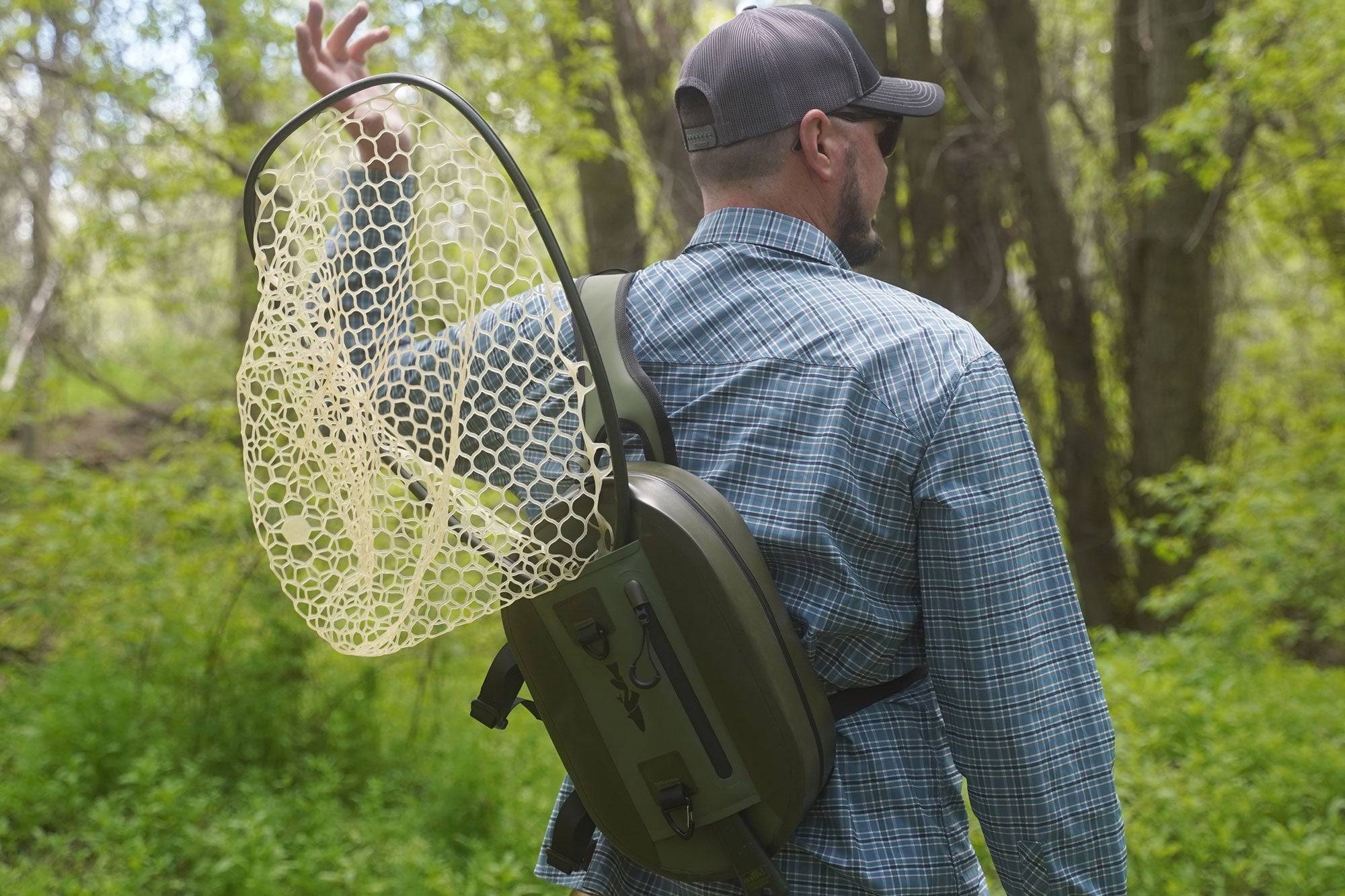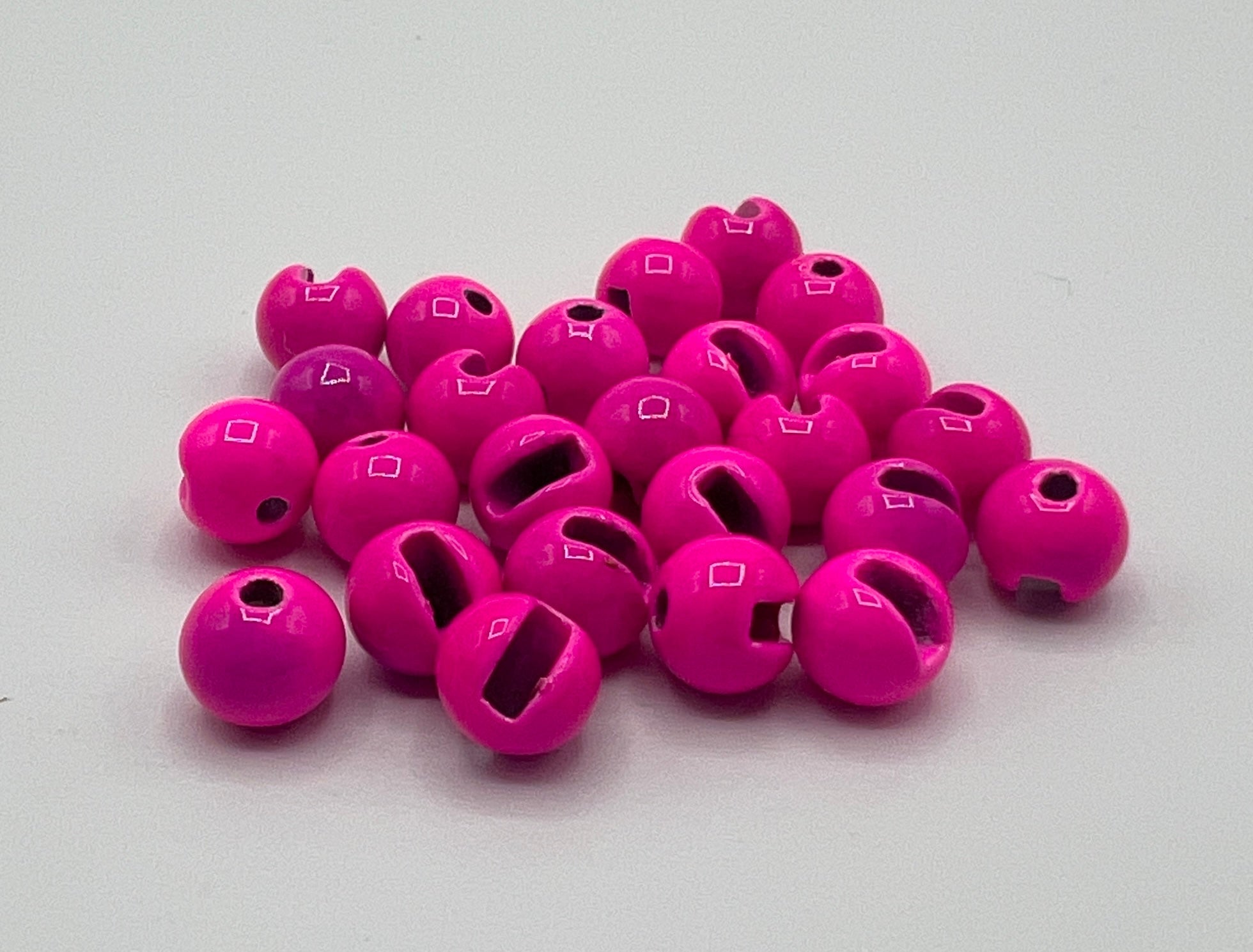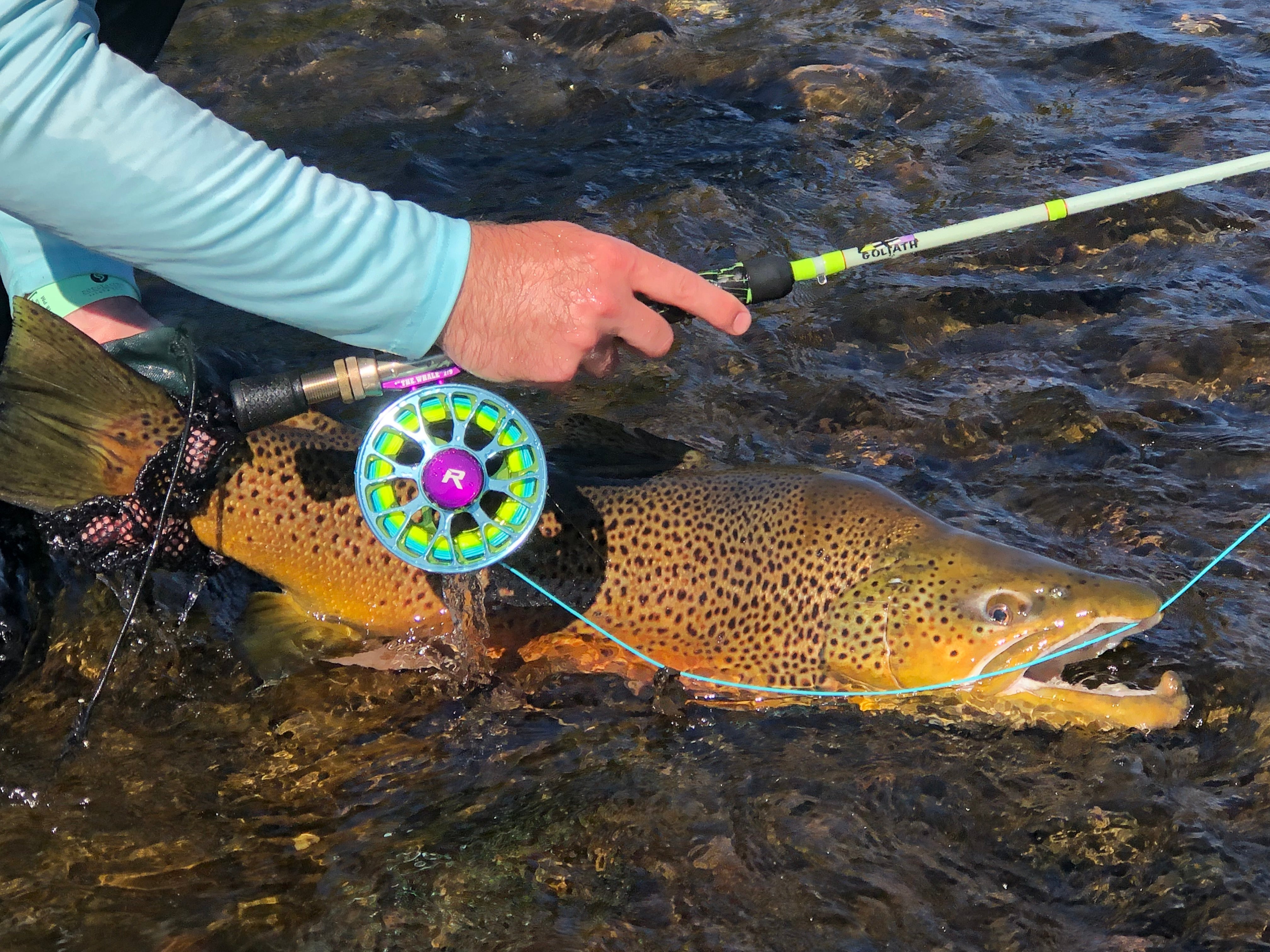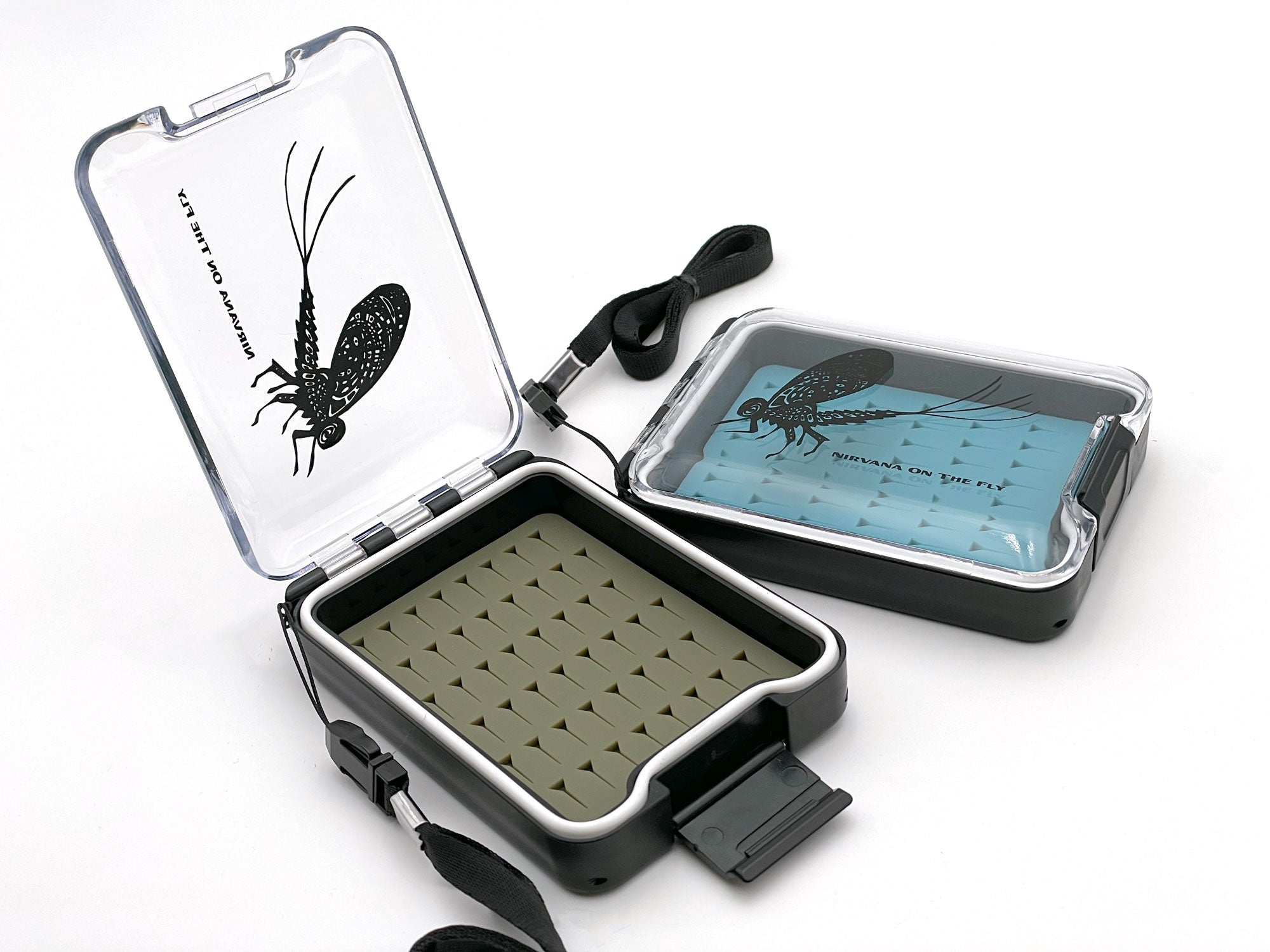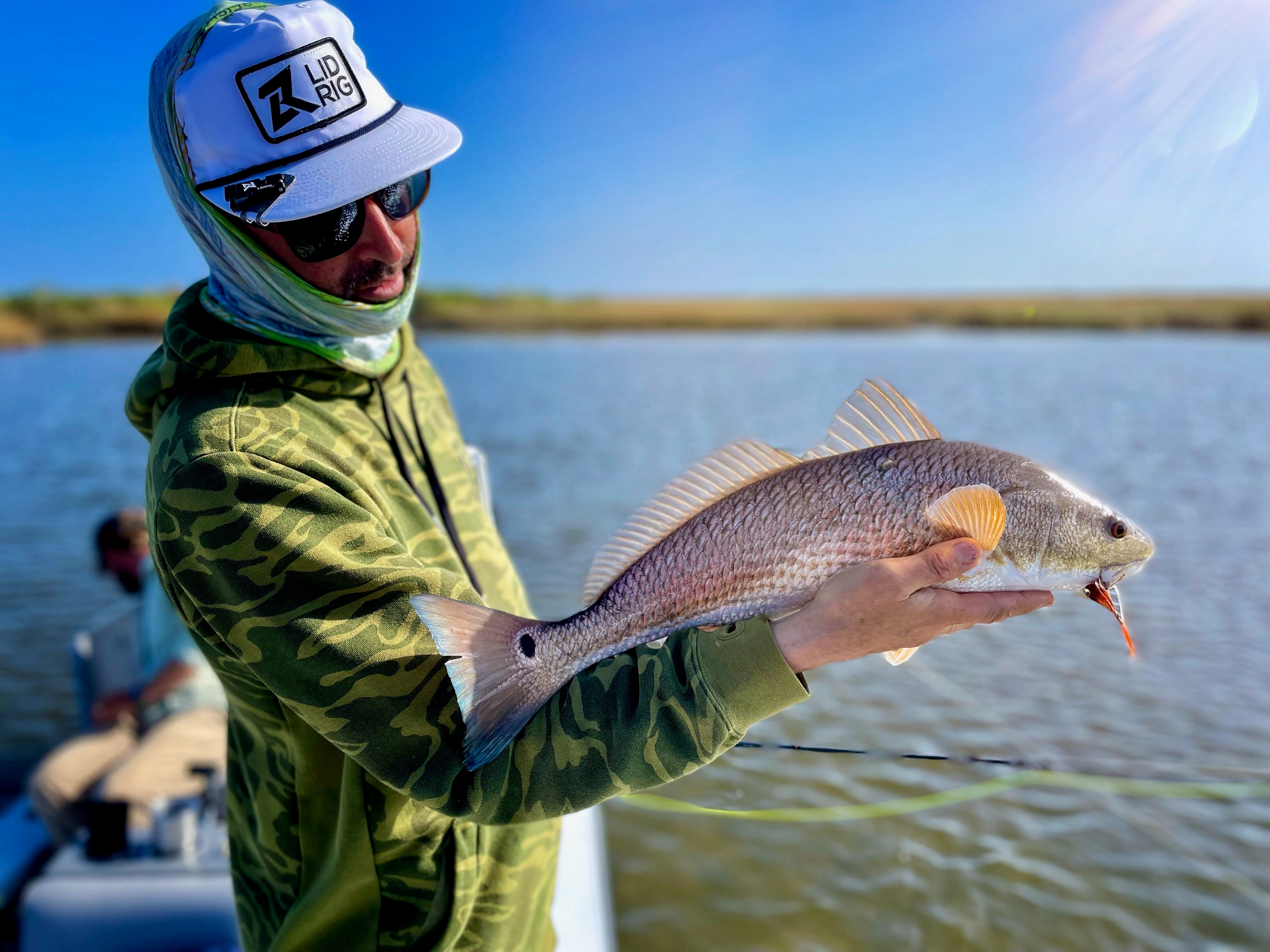Fly fishing in the creeks and rivers of the Eastern United States, particularly those areas known as "blue lines" on topographic maps, offers a blend of natural serenity and angling excitement. I’d like to chat about the nuances of blue line fly fishing, providing a comprehensive overview for anglers of all skill levels who are eager to venture into these lesser-known fishing havens. The silence, exploration, excitement, and solitude are regularly unmatched by blue line creeks.
Understanding Blue Line Fly Fishing
"Blue line" refers to the smaller streams and creeks marked by blue lines on topographic maps. These locations are typically quieter and more secluded, offering an intimate fishing experience. Pick up a map, find a creek that looks interesting, and go explore it with a friend. Fly fishing in these areas involves a little exploitative spirit and creativity to entice and catch fish, with trout being the predominant species. The clarity and pristine nature of these waters create ideal conditions for various trout species. Native trout like Brooks are a common target and the willingness to eat on top is pretty common. Don’t be assumptive about small fish only. There are times when you go into a small blue line and can find monsters for the territory. It’s the mystery and potential of finding a magical place that always has me exploring. I can recall early in my fly fishing catching a small Brook trout with a bow and arrow cast. It was a unique experience for me to see the fish and tactically put in a little bow and arrow cast with a small elk hair caddis. Watching that little guy turn and slam my fly was awesome!
Premier Locations in the Eastern U.S.
The Eastern United States is well known for blue lining. I am going to focus on a few areas that are absolutely fantastic and the epitome of blue lining in most anglers' minds. However, hesitating to try it in other areas of the United States is frowned upon so go find a local map and start exploring. In the meantime here are a few excellent choices boasting numerous blue line fishing spots, each with its distinct appeal.
One key to success with blue lining is property permission. Always make sure to be on publicly accessed land and within local fishing regulations. If you are going on private land, approach the owner and kindly ask if it is ok. A tip is to offer something in exchange for letting you allow to fish. For example, I always walk up with a backpack and tell them that, “I will aim to pick up any trash I see that will fit in my backpack and carry it out for you.” The tip is to put a garbage bag or two in the pack to keep you from having to clean out any nasty stink! Lastly there are now phone apps for finding creeks and TroutRoutes is a great resource. Access concerns are addressed among other things but the key is it is all in one location so you no longer have to do hours of research.
- Great Smoky Mountains National Park (Tennessee/North Carolina): This park is a haven for anglers targeting brook trout. Its remote streams provide a wilderness fishing experience amidst stunning natural beauty.
- Catskill Mountains (New York): As the historic birthplace of American dry fly fishing, the Catskills offer legendary streams that challenge and delight fly fishers amidst picturesque settings.
- Shenandoah National Park (Virginia): Renowned for its mountain streams, the park is a stronghold for native brook trout, requiring finesse and skill for successful angling.
- White Mountains (New Hampshire): These mountains feature pristine streams ideal for anglers seeking solitude and a deep connection with nature.
- Pennsylvania's Laurel Highlands: This region offers a myriad of blue line streams, rich with wild trout. The Laurel Highlands, with their lush forest settings and cold, clear waters, are a paradise for fly fishers.
- Maine's Appalachian Streams: In Maine, the Appalachian region's streams are known for their wild brook trout populations. The rugged terrain and remote locations make these streams a perfect spot for adventurous anglers.
Gear Essentials
The right equipment is crucial for a successful blue line fishing experience. The glory is that it can be done with so little gear and minimize your approach to fly fishing. If you want to read more about specific essentials I like to ensure having for blue lining then you need to read this. Blue Lining Essential Gear
Fly Rod and Reel: A 1 to 3-weight fly rod is generally suitable for these waters. Fish are typically a bit smaller and the sporty feeling of a light weight rod can be a blast. Trident Fly Fishing has an awesome collection of rods including bamboo which is historically fun to blue line with.
Fly Line and Leader: A weight-forward floating line is versatile for most situations. Weighting the head of the line allows you to cast with minimal line out. Having a little weight line out of the tip of the rod helps when casting various styles of casts in small and tight streams with overgrowth and other obstacles. Leaders should be short too. Typically 7.5 to 9 foot leaders are more than adequate for reach and precision.
Tippet size is interesting: You typically don’t need much because of the fish size. However, it is nice to run a little heavier like 4x so if you get hung up you don’t end up breaking off. A trick I like to use is to use fluorocarbon for dry fly fishing. It is more dense and wants to sink so I gink up the tippet so it floats. However, the abrasion resistance is a lot higher so when you do hang up and pull off a tree or shrub the tippet is commonly still in usable condition.
Fly Assortment: A variety of flies, including dry flies, nymphs, and streamers, is preferred. Aim to keep basic and common patterns that can reflect multiple insects. I use popular patterns like the Adams, Elk Hair Caddis, Hairs Ear, and Pheasant Tail Nymph are effective in these less traveled streams.
Waders and Boots: Depending on the season and location, chest or hip waders with sturdy, comfortable boots are recommended for navigating streambeds. I prefer to fish this style in the summer months so the weather permits me to do more wet wading. Either way, I find it extremely nice to have a good leg covering that will withstand the rigorous approaches. Climbing and crawling over brush, rock, etc. can quickly put a hole in waders or a bare skin leg.
Blue Lining Fishing Techniques
Effective blue line fishing involves several key techniques that will help you tremendously. Reading the water is of course a great technique to have in your repertoire. Identifying promising areas such as runs, pools, and riffles is crucial, as trout often inhabit these spots. However, when blue lining a lot of these are easily identifiable. In really small creeks my most common attribute to success is depth. If there is depth there are typically fish so I pick pocket my way up the creeks.
Stealth and approach are another effective tactic. Quiet, slow movements are essential to avoid startling the fish. Although there isn’t much preasure, the fish don’t see much traffic so any movement can startle fish. Taking a step back and a half a step slower will often put you in great position to sight fish and have easy success. Approach is king in blue lining. If you are successful at approaching and getting close enough to execute short bow and arrow cast you can have an incredible successful career at blue lining.
Fly selection and presentation are always a key but I must admit that you can make mistakes here and still have success. The key is not completely startling fish by ripping out casts or pricking fish. Matching the local insect life and presenting the fly naturally in the water can significantly increase the likelihood of a strike but standard patterns are close enough so don’t get hung up on the minor details
Last and most important is casting. Casting is tight and often limited so beyond your overhead casting, understanding a good roll cast and bow and arrow cast will go a long way. The Bow and arrow cast is absolutely deadly with dry flies and nymphs so practice it a fair amount to ensure your accuracy and understanding of it’s capabilities. Most think of it as a very short cast when in reality it can actually work at a descent distance. Joe Humphrey’s is a master at it so if you YouTube his techniques it is really impressive. Otherwise, thuis is a fantastic video showing great technique that you can learn from.
Blue line fly fishing in the Eastern United States is an enriching experience that has a unique connection to wilderness and remote angling for me. The hills and valleys of Easern United States have some of the most beautiful and untouched natural settings in the country. Whether you're an experienced angler or just beginning, these hidden streams offer a peaceful escape and the opportunity to refine your fly fishing skills. The essence of blue line fly fishing lies in the enjoyment of the sport and the harmony with nature, rather than solely in the catch. Eastern United States has ample opportunities and a heritage of blue lining but it can be done anywhere. I wholeheartedly recommend looking at a local topographical map and finding a blue line to explore in your area. Maps are more fun for me but TroutRoutes does make it a whole lot easier so sometimes I cheat. If only I had more time! Best of luck and wet nets.
Download the Dry Fly Tactics for Selective Trout eBook


By Christian Bacasa
Host of the Fly Fishing Insider Podcast
www.ffipodcast.com
@flyfishinginsiderpodcast
@dupeafish


